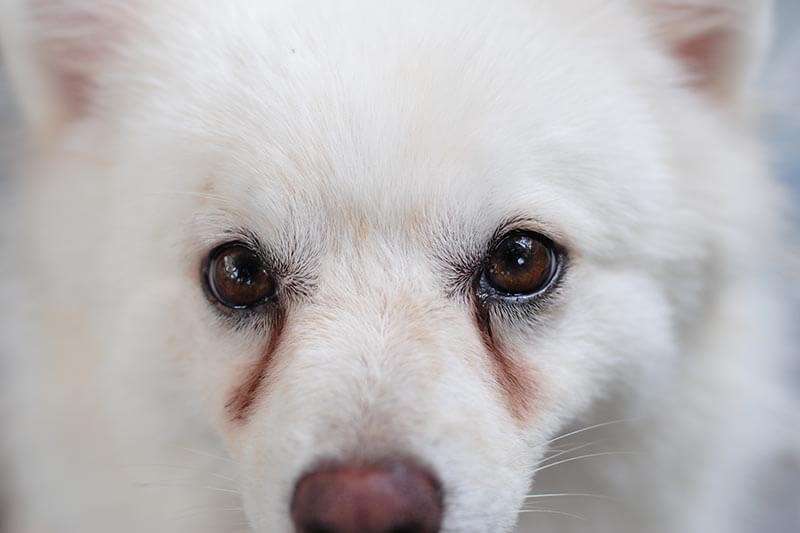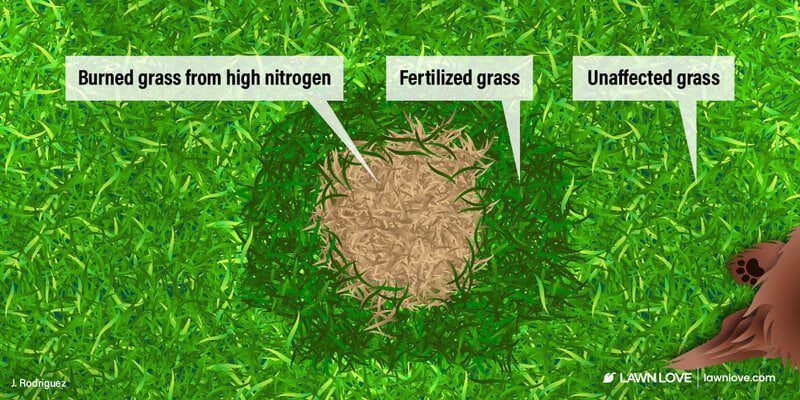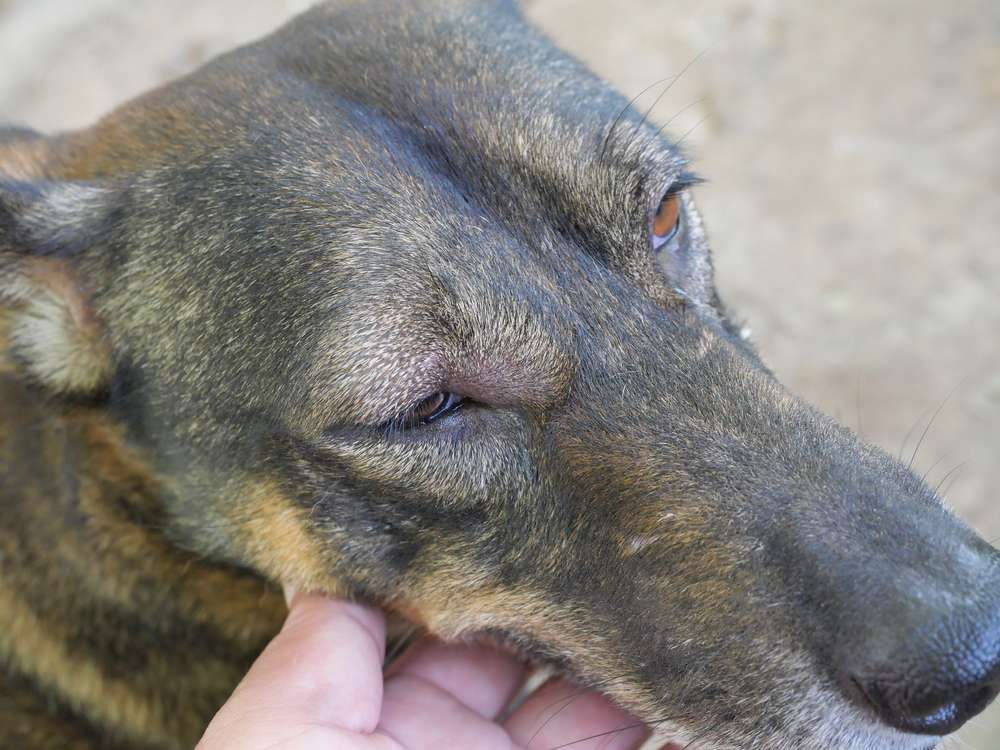Key Takeaways:
- Excessive tearing and eye drainage in dogs can be caused by various factors such as allergies, infections, or structural abnormalities.
- It is important to monitor the consistency, color, and odor of the tear discharge as it can indicate the underlying cause.
- If your dog's eyes are constantly watering or producing excessive discharge, it is recommended to consult a veterinarian for proper diagnosis and treatment.
- Certain breeds are more prone to excessive tearing due to their facial anatomy, such as brachycephalic breeds with shallow eye sockets.
- Regular cleaning of your dog's face and around the eyes can help prevent irritation and infection caused by excessive tearing.
Are you a dog lover who wants to ensure the health and well-being of your furry friend? If so, understanding the causes and solutions for excessive tearing and eye drainage in dogs is essential. Not only will this knowledge help you provide better care for your pet, but it can also save you unnecessary trips to the vet and costly medical bills. In fact, did you know that over 60% of dog owners are unaware of the common reasons behind their dog's watery eyes? By delving into this topic, you'll gain valuable insights into how to prevent discomfort and potential health issues in your beloved pup. So, let's dive in and uncover the secrets to keeping those adorable eyes bright and clear!
Understanding Excessive Tearing and Eye Drainage in Dogs
Dogs, just like humans, have tears that help keep their eyes moist and healthy. However, some dogs may have more tears than usual, leading to excessive tearing and eye drainage. This can be a cause for concern for dog owners, as it may indicate an underlying health issue.
Excessive tearing in dogs can be seen as wet or stained fur around the eyes, constant wiping or rubbing of the eyes, or a noticeable increase in tear production. Eye drainage may appear as crusty or sticky discharge around the eye area.
Why Do Some Dogs Have More Tears and Eye Discharge?
There are several reasons why some dogs may have more tears and eye discharge compared to others:
- Breed: Certain breeds are more prone to excessive tearing due to their anatomy. Breeds such as Poodles, Shih Tzus, and Bulldogs often have shallow eye sockets or hair growth around the eyes that can lead to tear overflow.
- Allergies: Dogs can develop allergies to various substances such as pollen, dust mites, or certain foods. These allergies can cause irritation in the eyes and result in increased tear production.
- Infections: Bacterial or viral infections can affect the eyes of dogs and lead to excessive tearing and eye discharge. Conjunctivitis is a common infection that causes redness, swelling, and discharge from the eyes.
Common Causes of Excessive Tearing and Eye Drainage in Dogs
Excessive tearing and eye drainage in dogs can be caused by various factors:
- Blocked Tear Ducts: If a dog's tear ducts become blocked or narrowed due to inflammation or other issues, tears may not be able to drain properly, resulting in excessive tearing.
- Eye Infections: Bacterial or viral infections can cause inflammation and irritation in the eyes, leading to increased tear production and eye discharge.
- Foreign Objects: Dogs are curious creatures and may get foreign objects, such as dust particles or plant material, stuck in their eyes. This can lead to excessive tearing as the eyes try to flush out the irritants.
Signs of Underlying Health Issues in Dogs with Excessive Tearing
Excessive tearing and eye drainage in dogs can sometimes be a symptom of an underlying health issue. It is important for dog owners to be aware of the following signs:
- Redness or Swelling: If a dog's eyes appear red or swollen along with excessive tearing, it could indicate an infection or inflammation.
- Pain or Discomfort: Dogs experiencing pain or discomfort in their eyes may paw at their eyes, blink excessively, or avoid bright lights.
- Changes in Behavior: If a dog becomes lethargic, loses appetite, or shows signs of discomfort when touched around the eye area, it could suggest a more serious underlying condition.
Treatment and Management of Excessive Tearing and Eye Drainage in Dogs
The treatment for excessive tearing and eye drainage in dogs depends on the underlying cause. In some cases, simple measures like regular cleaning of the eye area with warm water can help reduce tear stains and prevent further irritation. However, if there is an infection present, veterinary intervention may be necessary. The veterinarian may prescribe medicated eye drops or ointments to treat infections or recommend surgery for more severe cases involving blocked tear ducts.
Additionally, managing allergies or removing potential irritants from the dog's environment can help reduce excessive tearing. It is important to follow the veterinarian's advice and attend regular check-ups to monitor the dog's eye health.
Steps to Take if Your Dog has Persistent Excessive Tearing or Eye Drainage
If your dog has persistent excessive tearing or eye drainage, it is recommended to take the following steps:
- Consult a Veterinarian: Schedule an appointment with a veterinarian who can examine your dog's eyes and determine the underlying cause of the excessive tearing.
- Follow Treatment Recommendations: If treatment is required, follow the veterinarian's instructions regarding medication administration, cleaning routines, or any necessary lifestyle changes for your dog.
- Maintain Good Eye Hygiene: Regularly clean your dog's eye area with a damp cloth or cotton ball to remove any discharge and prevent further irritation.
- Monitor Progress: Keep an eye on your dog's symptoms and note any changes. If there are no improvements or if the condition worsens, contact your veterinarian for further guidance.
Why Do Some Dogs Have More Tears and Eye Discharge?
Excessive tearing and eye discharge in dogs can be caused by various factors. One common reason is the shape of their face and eyes. Breeds with flatter faces, such as Bulldogs and Pugs, often have shallow eye sockets that can lead to poor tear drainage. This results in an overflow of tears and increased eye discharge.
Another factor contributing to excessive tearing is allergies. Dogs, just like humans, can be allergic to certain substances like pollen, dust mites, or certain foods. These allergens can irritate the eyes and cause them to produce more tears as a defense mechanism.
Additionally, infections can also lead to increased tear production. Bacterial or viral infections in the eyes can cause inflammation and irritation, resulting in excessive tearing and discharge.
It's important to note that while some tearing is normal for dogs, persistent or severe cases should be evaluated by a veterinarian to rule out any underlying health issues.
Common Causes of Excessive Tearing and Eye Drainage in Dogs
There are several common causes of excessive tearing and eye drainage in dogs. One possible cause is conjunctivitis, which is an inflammation of the conjunctiva (the thin membrane covering the front surface of the eyeball). Conjunctivitis can be caused by allergies, infections, or foreign objects irritating the eye.
Another common cause is dry eye syndrome or keratoconjunctivitis sicca (KCS). This occurs when there is insufficient tear production or poor tear quality. Dry eye syndrome can lead to discomfort for the dog and may result in chronic tearing.
Other potential causes include ingrown eyelashes or eyelids that roll inward (entropion), both of which can irritate the eyes and cause excessive tearing. Additionally, anatomical abnormalities such as blocked tear ducts or abnormal eyelid structures may also contribute to the issue.
It's crucial to identify the underlying cause of excessive tearing and eye drainage in order to provide appropriate treatment and management for your furry friend.
Signs of Underlying Health Issues in Dogs with Excessive Tearing
Excessive tearing and eye discharge in dogs can sometimes be a symptom of underlying health issues. While occasional tearing is normal, persistent or severe cases may indicate an underlying problem. It's essential to be aware of other signs that may accompany excessive tearing, as they can help identify potential health issues.
One common sign is redness or inflammation around the eyes. This can indicate an infection or allergic reaction. If you notice your dog frequently pawing at their eyes or rubbing them against objects, it could be a sign of discomfort or pain.
Another concerning sign is a change in behavior. If your dog becomes lethargic, loses appetite, or shows signs of discomfort while eating, it may indicate a more serious condition related to the excessive tearing.
In some cases, you may also observe changes in your dog's vision or notice cloudiness in their eyes. These symptoms should not be ignored and require immediate veterinary attention.
If you notice any of these signs along with excessive tearing and eye drainage in your dog, it's crucial to consult with a veterinarian for proper diagnosis and treatment.
Treatment and Management of Excessive Tearing and Eye Drainage in Dogs
Treating excessive tearing and eye drainage in dogs depends on the underlying cause identified by a veterinarian. Once the cause is determined, appropriate treatment can be prescribed to alleviate the symptoms and manage the condition effectively.
For infections such as conjunctivitis, topical antibiotics or antiviral medications may be prescribed. Allergies can often be managed through avoidance of allergens or with antihistamines prescribed by a vet. In cases of dry eye syndrome (KCS), artificial tear supplements or medications that stimulate tear production may be recommended.
In some situations, surgical intervention may be necessary. For example, if your dog has entropion or ingrown eyelashes, surgery can correct the anatomical abnormalities and reduce tearing.
It's important to follow the veterinarian's instructions regarding medication administration and any necessary follow-up appointments. Regular eye cleaning with a veterinarian-approved solution can also help manage excessive tearing and prevent further complications.
Remember, proper treatment and management are essential to ensure your dog's comfort and overall well-being.
Steps to Take if Your Dog has Persistent Excessive Tearing or Eye Drainage
If your dog experiences persistent excessive tearing or eye drainage, it's crucial to take appropriate steps to address the issue promptly. Here are some recommended actions:
1. Schedule a veterinary appointment: Consult with a veterinarian to determine the underlying cause of the excessive tearing. They will perform a thorough examination of your dog's eyes and may recommend additional tests if needed.
2. Follow the veterinarian's advice: Once the cause is identified, follow the veterinarian's recommendations for treatment and management. This may include administering prescribed medications, making dietary changes, or implementing environmental modifications.
3. Maintain good eye hygiene: Clean your dog's eyes regularly using a veterinarian-approved eye cleaning solution or wipes. This helps remove any discharge and prevents further irritation.
4. Avoid potential irritants: If allergies are suspected as the cause of excessive tearing, try to identify and minimize exposure to potential allergens such as pollen or certain foods.
5. Monitor for changes: Keep an eye out for any changes in your dog's behavior, appetite, or vision. If you notice any worsening symptoms or new concerns arise, contact your veterinarian immediately.
By taking these steps and working closely with a veterinarian, you can help manage and alleviate persistent excessive tearing or eye drainage in your beloved canine companion.
In conclusion, excessive tearing and eye drainage in dogs can be caused by various factors such as allergies, infections, or blocked tear ducts. It is important to consult a veterinarian for proper diagnosis and treatment to ensure the well-being of our furry friends.
Why does my dog have watery eyes with discharge?
Epiphora, or excessive tearing, can lead to fur staining, unpleasant odors, or infected skin. This condition can be caused by various factors such as abnormal eyelashes, inflammation, allergies, corneal ulcers, tumors, eye pain, and more. The treatment for excessive tearing depends on the underlying cause.
When should I be concerned about my dogs eye discharge?
If your dog's eyes are watery, it could be due to exposure to pollen or dust. This increased tearing is a natural response to clear the problem. However, if your dog's eyes remain watery or if they become red, painful, or have any other unusual discharge, it is important to schedule an appointment with your veterinarian. This will ensure proper care and treatment for your dog's eye condition. The date provided is just a placeholder.
Why are my dogs eyes producing so much mucus?
Dogs can experience discharge from their eyes for a common reason, which is the tears flushing out dust after a long period of sleep. This discharge can vary in texture, consistency, and color. For instance, you may observe that your dog's eye discharge ranges from slightly crusty to more mucus-like, and it can appear green, yellow, or clear.
How do you treat a dog's weepy eyes?
According to Dimock, if eye discharge is not causing any discomfort, you can treat it at home by wiping it with a tissue or damp cloth. You can also use over-the-counter drops like contact solution (sterile saline) every 2-4 hours. Just make sure not to touch the eye with the tip of the bottle to avoid contamination.
What are the symptoms of distemper in dogs?
At first, dogs who are infected will experience a discharge from their eyes that ranges from watery to pus-like. They will then exhibit symptoms such as fever, nasal discharge, coughing, lack of energy, decreased appetite, and vomiting.
What does dog conjunctivitis look like?
Symptoms of conjunctivitis include discharge from the eyes that can be cloudy, yellow, or greenish, as well as squinting or excessive blinking, and redness or swelling around the eyes. Conjunctivitis usually affects both eyes, although in certain cases only one eye may be involved.















